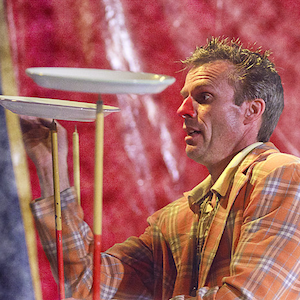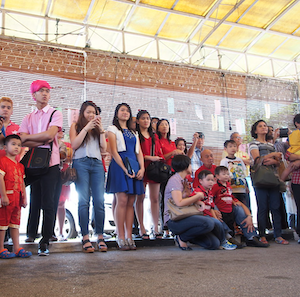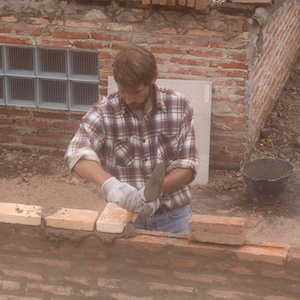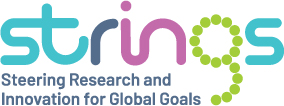Prof John Robinson
Creating a sustainable world will require significant change in the way our institutions function and act. What follows is one attempt to outline some lessons learned—in the form of five metaphors—that I have found useful in trying to foster institutional change in universities.
The metaphors grew out of a 12-year process—from 1999 to 2011—of trying to get the Centre for Interactive Research on Sustainability (CIRS) created at the University of British Columbia (UBC). CIRS was designed to be a living lab of sustainability and net positive in four environmental and three human ways (it eventually succeeded in five of these goals). Creating it proved much more challenging than expected. What became evident as we tried to get this building and its programs conceived, funded, approved, designed and implemented, is that there were many institutional road-blocks, grounded in the normal decision-making practices and institutional culture of the university, that worked against our efforts.
It speedily became apparent that every aspect of that vision—the inter-institutional academic partnerships, the nature of the relationship with non-academic partners, the governance structure, the sustainability goals for the building process, the building design process, the process of obtaining funding for the building and program, the need to negotiate the divide between capital and operating costs and revenues in new ways—involved going beyond standard operating procedures for UBC and other partners, and took the organizations involved out of their comfort zones with regard to their decision-making processes. These difficulties had not been created to prevent CIRS from happening, but they all had to be overcome for CIRS to be built.
And they gave rise to a fundamental insight: the barriers to creating CIRS were not technological or, in the end, economic. In every case the real barriers turned out to be institutional, having to do with the need to challenge and change the standard rules of the game involved in funding, financing and constructing academic buildings, creating and funding new research programs, setting up governance systems, devising new ways of teaching, and creating new forms of partnerships with other academic and non-academic partners.
In getting CIRS off the ground, we learned that it is by no means sufficient to come up with new ideas, approaches and concepts for achieving non-incremental social change. Instead, considerable thought and effort must go into articulating and implementing new institutional rules that allow such initiatives to flourish, and to survive the setbacks and failures that inevitably accompany innovation and experimentation.
Lessons learned – five metaphors

Photo by Steve Harvey on Unsplash
1. Needle in the groove (Responding to path dependence)
The first challenge we confronted in trying to develop CIRS was that decision-making about such issues as new buildings or programs does not take place in a vacuum but is characterized by what might be called strong path dependence. There exists a set of rules and standard practices which strongly constrain what decisions get made and actions undertaken, including who gets to create new buildings and programs. In essence, CIRS was an answer to a problem the organizations necessary to its success had not set themselves.
The metaphor here is that of the needle of a phonograph spinning in its groove, producing the tune that the organization has asked for. If we want to change the tune being played, we have to create a new groove. This requires effort, to hold the needle in a new position, out of the old groove, until it grinds a new groove. This amounts to creating a new set of operating procedures. Perseverance, visibility and a very clear sense of mission are required.

“Plate spinning…” by vcorne00 is licensed under CC BY-NC-ND 2.0
2. Plate spinning (Anticipating choke points)
A second challenge we encountered was related to, but separate from, the question of path dependence. It resulted from the fact that responsibility for approving the myriad aspects of a project like CIRS, which did not fall into conventional patterns of decision-making, tends to be distributed across the relevant organization.
In fact, there were nine UBC offices that had full or partial veto power over the future of CIRS. These included UBC Treasury, Development, Industry Liaison, Research Services, Land and Building Services, Legal Services, the College for Interdisciplinary Studies, and the offices of several Vice-Presidents. It became necessary to keep in continuous touch with the relevant representatives of each of these offices to make sure that they were in the loop and that the evolution of the CIRS program did not cause problems for any of them.
Metaphorically, this process could be likened to a process of plate-spinning. Each office had a CIRS plate spinning on the end of a stick. They had all to be visited frequently enough that their plate could be given a spin so that it did not fall off the stick. The breakage of any plate could cause serious or fatal complications for CIRS.

“Lion Dance’s audience” by Johnragai-Moment Catcher is licensed under CC BY 2.0
3. Wallflower (Fostering institutional engagement)
A key problem for the CIRS initiative was that it did not belong to any one Faculty, and so did not fit into existing capital programs and did not have a specific institutional home. Given the zero-sum nature of institutional budgeting, it was not obvious why any individual Faculty or Department would champion or even support it. It was necessary to mobilize support, and get but-in within the university by connecting to institution-wide agendas and priorities, and provide connections to other projects and priorities. In a sense this is the flipside of the plate-spinning process.
The metaphor that came to mind in this context was that of the wallflower at the dance. We needed to find ways to engage a wide range of institutional actors and have them join the CIRS dance.

“Ed Vorisek laying brick in Paraguay” by pennstatenews is licensed under CC BY-NC-ND 2.0
4. Bricklaying (Ensuring momentum)
By its very nature, CIRS was an implausible idea. In its early days especially, CIRS required a leap of faith on the part of its supporters. This meant that it was very important to keep a sense of forward momentum or continuous progress. Any significant barrier could be lethal.
The metaphor that seemed to illustrate this aspect was that of laying bricks to build a wall. Each time contact was made with the expanding list of CIRS partners, it was important to demonstrate some progress. In effect, at each visit to any given decision-maker or partner, the CIRS wall needed to be a little higher than it was at the last visit. Frequent updates and continuous follow-up are a must.

Photo by Shayan Ghiasvand on Unsplash
5. The Mosaic (Creating external partnerships)
If CIRS was to be built and fulfill its goal of contributing directly to the achievement of sustainability on the ground in the Vancouver region, then strong partnerships with non-academic organizations in the private, public and NGO sectors were essential. Extensive partner-building activities led to the development of two principles for mutually beneficial partnerships.
The first is the principle of “no net increase”. Everyone we approached was already working at capacity and had little time to identify, let alone explore, new activities they are not already undertaking. As a result, we consciously tried to identify connections to existing activities of potential partners. A second, and complementary, principle is that of “mutual benefit”. The idea is that the CIRS partnership must be of tangible benefit to both sides of the partnership.
The metaphor here is that of a mosaic. Each partner is a tile in the mosaic and the CIRS development team had to be the grout, tying together these sometimes quite unconventional relationships. It was our job to show how the goals and activities of CIRS would connect with, and promote, the already-existing priorities and agendas of our partner organizations and supporters.
Conclusions – what we learned
Building on these five metaphors, I think we can arrive at several more general lessons about creating institutional change:
- Institutional issues are as important as substantive ones: need to change the rules of the game.
- Hold the needle up; spin plates; lay bricks; create mosaics; join the dance: the common thread is continuous engagement.
- There Is a big latent demand for change and sustainability in organizations. The key is to find ways forward that work for various partners.
- It is very important to enable others, not control, manage or direct.
- Success is when sustainability is normalized throughout the institution: it becomes the default not the change.
Creating a sustainable world will require action to steer change in terms of (i) policies, technologies and behaviours; (ii) socio-technical systems, collective practices and systems of governance; and (iii) fundamental ways of conceiving of, and being in, the world. But such activities must be institutionalized in ways that foster and support their continuation. We therefore need to play close attention to the institutional rules that govern day-to-day activity: job descriptions, performance evaluation criteria, codes of practice, professional standards, etc. that govern what people do in their jobs.
These five metaphors were developed out of my experience with the CIRS project. I have since found that, in many other contexts, they help to bring this institutional level of change to light and provide very useful guidance on how to navigate pathways to more sustainable outcomes.

Leave A Comment